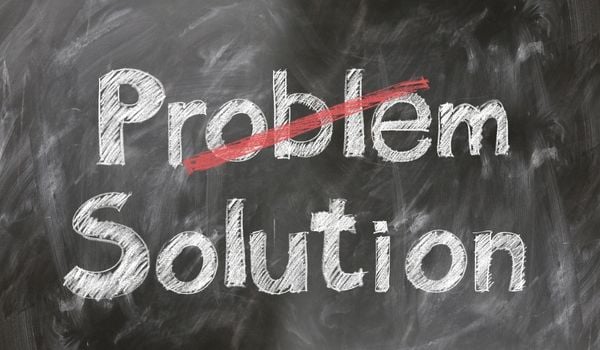Your water softener works hard behind the scenes — pulling calcium and magnesium from your tap water so you don’t have to deal with limescale or spotty dishes. But after a while, those mineral-trapping resin beads need a reset.
That’s where regeneration comes in.
This built-in cleaning cycle flushes out hard water minerals and recharges the resin so your system stays effective. It’s automatic, but understanding how it works (and what to do if it goes haywire) can help you keep things running smoothly — and save you from salt-hogging or system hiccups down the line.
⚡ Quick Take: How Water Softener Regeneration Works
- 🧪 Ion exchange traps hard minerals on resin beads inside the tank.
- 💦 Brine solution flushes through to clear out calcium and magnesium buildup.
- 🔁 Five main steps happen during regeneration: brine refill, backwash, brine draw, fast rinse, and slow rinse.
- 🕒 It takes about 90 minutes on average and usually runs overnight.
- 🔧 You can trigger it manually, but most systems regenerate automatically based on water use.
- 📉 If cycles are too frequent or too long, it could be a settings issue — or a sign it’s time to clean a valve or check the brine tank.
🔁 5 Water Softener Regeneration Stages (Explained Simply)

Each regeneration cycle refreshes your system by flushing out minerals and recharging the resin bed. It’s not just one quick rinse — there are multiple steps involved, each with a specific purpose.
Here’s how it all breaks down:
| 🔄 Stage | 💬 What Happens |
|---|---|
| 💧 Brine Refill | Water enters the brine tank to dissolve salt and form the cleaning solution. In newer systems, this happens before regeneration starts. |
| 🌊 Backwash | Water flows upward through the resin tank to flush out dirt, iron, and debris. This clears the way for brine to do its job. |
| 🧂 Brine Draw | The system pulls saltwater into the resin tank. This is where the ion exchange magic happens — swapping sodium for calcium and magnesium. |
| 🚿 Fast Rinse | Clean water flushes out any leftover brine and minerals, restoring the resin bed. |
| ⏳ Slow Rinse | Water flow returns to normal, gently resettling the resin beads. Your softener is now back in service. |
🧠 Helpful to Know: Most systems run this cycle overnight, so you’ll hardly notice it’s happening. If yours starts regenerating too often — or takes too long — that could be a sign something’s off (more on troubleshooting below).
🧠 Regeneration FAQs

👉 Still a little fuzzy on how regeneration actually works? No worries — here are quick answers to the most common questions, from runtime quirks to salt use surprises.
| ❓ Question | ✅ Quick Answer |
|---|---|
| ⏱️ How long does regeneration take? | Usually 70–100 minutes, depending on system size and pressure. |
| 🚿 Can I use water during regeneration? | Yes, but it won’t be softened — best to schedule overnight. |
| 🔊 Is it supposed to make noise? | Clicks, whooshing, and draining are normal during the cycle. |
| 📅 How often should it regenerate? | Every 2–3 days is common. If it’s constant, check your hardness setting or system size. |
| 🧂 Why is it using so much salt? | Could be a clogged valve, leftover brine water, or old resin. Read more: Using Too Much Salt? |
| ⚠️ What if it’s stuck regenerating? | Check the brine valve, incoming water pressure, or faulty control settings. |
| 🔧 Can I regenerate manually? | Yes — most units have a simple “regen” button on the control head. |
| 📉 Does it affect water pressure? | Slight drop is normal during the cycle. Persistent low pressure? Here’s why. |
💡 Final Thought:
Water softener quirks can be frustrating, but most issues boil down to: settings, clogs, or aging components. Catching early signs of trouble — like long cycles or salty water — helps you fix problems before they turn costly.
🛠️ Water Softener Regeneration Troubleshooting

Even the most reliable systems can hit a snag. If your softener isn’t regenerating properly — or seems stuck in a loop — here’s how to pinpoint what’s going on and what to check first.
⚙️ Common Issues & Quick Fixes
| 🚨 Problem | 🔧 What to Check |
|---|---|
| System isn’t regenerating | Check for power issues, timer settings, or a clogged brine valve. Try a manual regen cycle. |
| Cycle takes too long | Could be low water pressure, a clogged Venturi valve, or sediment buildup in the lines. |
| Regenerating too often | Double-check your hardness setting — or test your water again. An undersized softener may be working overtime. |
| Using too much salt | Look for leftover brine, resin wear, or valve clogs. Clean the Venturi with a soft brush. |
| Stuck in regeneration mode | Check for valve blockages or a failed control head. If in doubt, bypass the system and call a pro. |
💡 Extra Tips:
- If you haven’t replaced your resin in 10+ years, it may be time.
- Hardness setting too high = wasted salt and more frequent regen cycles.
- Well owners: reduced pressure during droughts can stretch cycle times.
👉 Need a deeper dive? Here’s more on what to do if your system is using too much salt.
🧠 Final Thoughts
Regeneration might sound technical, but it’s just your water softener’s way of hitting the reset button — rinsing away the minerals it’s trapped and getting ready for round two.
Knowing how it works (and what to do if something goes wrong) makes a huge difference in how well your system performs — and how long it lasts.
💡 Whether you’re troubleshooting, fine-tuning your salt use, or just curious about your system’s inner workings, staying informed helps you catch small issues before they become big, soggy problems.
👉 Still shopping for a softener or considering an upgrade? Here’s a helpful guide to today’s leading water softeners — from smart metered models to whole-house workhorses.
 155 people found this helpful. Was this guide helpful to you?
155 people found this helpful. Was this guide helpful to you? 

